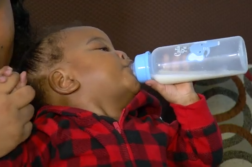CHICAGO, Ill. (Ivanhoe Newswire) – Last year marked the ninth year in a row of record-setting liver transplantations. More than 9,200 people across the country received a liver, most from a deceased donor, but several hundred from a living one. Today, livers that were once thought not good enough for transplantation are being revitalized and reused. Saving livers
Since the 1960’s, livers have been kept on ice for up to nine hours until transplantation – recently, that’s changed.
“Now, we connect these organs to special devices that infuse oxygen, blood, fluids into the organs,” says Northwestern Memorial Hospital transplant neurosurgeon, Daniel Borja, MD.
Using two different types of perfusion – cold and warm – to keep livers viable longer. Cold perfusion involves cooling the organ to 32 to 39 degrees Fahrenheit, slowing metabolism, reducing oxygen demand, and extending preservation up to 24 hours. Warm perfusion maintains the liver temperature at 98.6 degrees, mimicking the body condition for near-normal function and better assessment during transportation. It’s typically done for just a few hours.
Dr. Borja adds, “Livers that we would have been hesitant five years ago to do the transplant, now we can use, and the outcomes of the patient, the way the patient does after transplant is quite good.”
Even though more livers are being transplanted than ever before, more livers are needed. Right now, 10,000 people in the United States are on the waiting list for a liver transplant. The cold and warm perfusions are not just for livers – lung, heart and kidney transplant teams are also beginning to use them for transplantation.
Contributors to this news report include: Marsha Lewis, Producer; Kirk Manson, Videographer; Roque Correa, Editor.
To receive a free weekly e-mail on medical breakthroughs from Ivanhoe, sign up at: http://www.ivanhoe.com/ftk
Source:
https://unos.org/news/in-focus/2021-9th-record-year-liver-transplants/
MEDICAL BREAKTHROUGHS
RESEARCH SUMMARY
TOPIC: NEW TECHNOLOGY SAVING LIVERS AND LIVES
REPORT: MB #5275
BACKGROUND: The liver is responsible for processing nutrients, medications, and hormones, producing bile, making proteins, removing toxins from the blood, and preventing infections. A liver transplant is a procedure that removes a damaged liver and replaces it with a healthier one. Liver transplants can be an option for people with chronic liver disease. According to the American Liver Foundation, about 4.5 million adults have liver disease. But there have been only a little more than 9,000 liver transplantations in recent years.
(Sources: https://www.mayoclinic.org/tests-procedures/liver-transplant/about/pac-20384842
https://unos.org/news/in-focus/2021-9th-record-year-liver-transplants/)
DIAGNOSING: Liver disease can be caused by a slew of things, including: Hepatitis B and C, alcoholic liver disease, and/or genetic diseases that affect the liver. Some symptoms of liver disease include, but aren’t limited to: abdominal pain, bruising easily, changes in color of urine, fatigue, and/or swelling in arms or legs. Doctors can diagnose liver disease with blood tests, ultrasounds, MRIs, CT scans, or a liver biopsy.
(Sources: https://www.mayoclinic.org/tests-procedures/liver-transplant/about/pac-20384842
https://my.clevelandclinic.org/health/diseases/17179-liver-disease)
NEW TECHNOLOGY: Northwestern Medicine is one of the first transplant centers to introduce a new way of preserving livers for transplantation – it’s called warm and cold perfusion – the difference in temperatures keeps the liver in good condition longer, before transplantation. Leader of liver perfusion and transplant surgeon, Dr. Daniel Borja says, “We are already the most experienced cold liver perfusion team in Illinois, and now that we are introducing warm perfusion, more patients will benefit.”
FOR MORE INFORMATION ON THIS REPORT, PLEASE CONTACT:
Michelle Green
If this story or any other Ivanhoe story has impacted your life or prompted you or someone you know to seek or change treatments, please let us know by contacting Marjorie Bekaert Thomas at mthomas@ivanhoe.com




